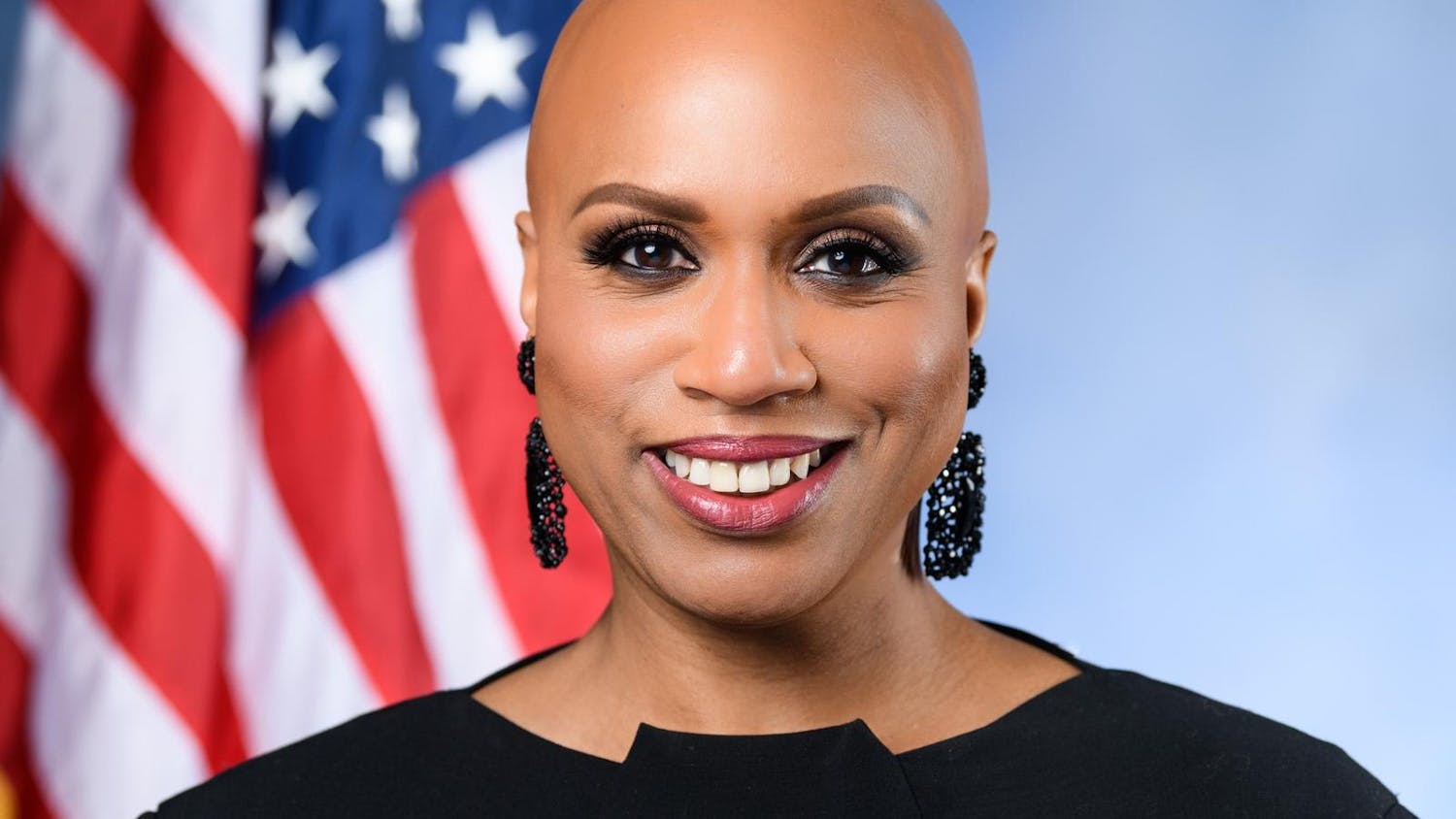Last Tuesday’s midterm elections saw the Democrats take control of the House of Representatives, while Republicans are projected to increase their majority in the Senate by one to two seats. Exact results are still being tallied, and updates since Election Day have improved voter margins for Democrats, according to the New York Times. High voter turnout and the election of over 100 women to the House of Representatives made this election historic, according to four University social scientists The Herald interviewed for their insights on the election.
The election drew a turnout of nearly 50 percent nationally, the highest in decades and a significant jump from 36.4 percent in the 2014 midterm elections, according to the New York Times. This “tremendous increase … speaks to how energized the electorate was,” said Senior Fellow in International and Public Affairs Richard Arenberg.
High voter turnout in favor of Democrats was particularly noteworthy, said Professor of Political Science and International and Public Affairs Margaret Weir. “It’s really a pretty amazing turnout, especially for Democrats, who just don’t turn out in very high numbers during midterms,” she said. Democrats outvoted Republicans by 51.7 million to 47.4 million this election cycle, according to the Washington Post. Weir attributed the increase in votes to grassroots organizing across the country.
Supreme Court Justice Brett Kavanaugh’s confirmation hearings may have increased Republican turnout, Arenberg said. He suggested that the hearings agitated Republicans and left them “more accessible when Trump began to focus on” immigration, which the president termed the “caravan,” referring to a group of over 7,000 Central American migrants walking toward the United States.
Professor of Political Science and Public Policy James Morone disagreed about the impact of Kavanaugh’s hearings on Republican voter turnout. Nevertheless, the hearings deepened convictions across party lines, Morone said.
Increased polarization has accompanied the uptick in political participation. This Senate is “much more conservative than the last Senate” while the House is “far more liberal than the last House was, and for that matter, since the House has been since at least 2008-10,” Morone said.
According to Weir, polarization is occurring asymmetrically. “I don’t think it’s both parties equally; I think it’s the Republican Party that has moved to an extreme,” she said, citing the party’s immigration rhetoric and a “whole consortium” of conservative funding.
“There’s nothing comparable,” she said. “More people join Democratic Socialists of America, but the amount of power that a group like that has in the Democratic Party compared to what (far-right) groups have in the Republican Party is just nothing.”
The United States at this political moment is “a very alienated society,” said Professor of Sociology Gregory Elliott, which has caused the “notion of tribes” to arise, he added.
Arenberg also noted increasing polarization. Some Democrats have shifted left, while most Republicans have shifted toward Trump rather than the traditional right, he said.
Polarization is also reflected in deepening rural-urban divisions, which split along partisan lines. But in a shift this election, suburban voters, especially women, moved left. “In major cities, the suburban (rings) which have typically been largely Republican are flipping over and are looking more Democratic,” Arenberg said.
Women might have been “inspired by the Women’s March” or were disappointed after the 2016 election “and decided to do something about it — there’s certainly a lot of cases of that across the country,” Weir said.
Furthermore, ballot initiatives in certain states to depoliticize district-line drawing suggest a political undercurrent toward bipartisanship. “If you look at the ballot initiatives, there is a kind of popular surge in blue and red states to try to get away from the hard-knuckle politics, so several states voted to end political gerrymandering — including Missouri, an increasingly red state,” Morone said.
Gerrymandering has brought heightened attention to state legislative races for both political parties. Because of gerrymandering of House districts in recent decades, “both parties have recognized a kind of national importance to winning these battles for the state houses,” Arenberg said. As a result, these races are “becoming much more expensive” and “big donors in both parties are paying more attention to that level than ever before,” he added.
This awareness has also entered into the consciences of voters, Morone said. “For the first time in recent history, voters are thinking not just about who they want to vote for, but also what the rules of the game are. Just the fact that we’ve had eight different states voting on the rules of the game is really quite striking,” he said. While Morone considered national results more of a tie, on a state level, “where the Democrats have been doing very, very badly since 2010,” the Democrats came out ahead.
The flipping of seven governorships further strengthened Democratic control at the state level, Morone added. Morone and Arenberg stressed that, in light of the upcoming 2020 census, the number of state-level victories for the Democrats lays groundwork for increases to the party’s power, depending on how state legislatures choose to redraw district lines.
Despite the focus on increasing polarization, “the biggest factor that’s noteworthy doesn’t fit on the ideological spectrum,” Arenberg said: 114 women were newly elected or re-elected to Congress as of Nov. 13, according to the Center for American Women and Politics at Rutgers University. This is a “historic high,” which could signal a permanent change in representation, he explained.
According to NBC News, 234 women were their party’s nominees for the House, and 22 women were their party’s nominees for the Senate. Of the 186 Democratic women running, 105 were elected, compared to 15 of the 52 Republican women, according to CAWP.
The priorities of Democratic women’s campaigns may largely explain these victories, Weir noted. “A lot of these women won not on ideological issues, but on bread-and-butter issues like health care and jobs, and there will be a focus on those things” going forward, she said.
Health care and “bread-and-butter” issues reflected a general Democratic focus that was also evident across male candidates’ platforms, Weir added. Focusing on health care and jobs rather than ideology was a success, she said.
Arenberg and Morone agreed that the Democrats ran largely on health care, whereas Republicans echoed Trump’s rhetoric on immigration. “Trump did a brilliant job mobilizing his base and pulling this issue out of thin air — the migrant-caravan — and deploying it to great effect, creating this atmosphere of real tension and fear,” Morone said.
“The rhetoric around immigration on the part of Republicans has been disgraceful; I think it has put people’s lives in danger. I don’t think it’s worthy of our country,” Weir said.
The disproportionate focus on health care and immigration came at the expense of other issues during this cycle, Morone said. For instance, the environment and the economy received little media attention, he added.
Republican rhetoric on immigration comes from a party that is now strikingly more racially homogenous than its counterpart, Morone said. There was an overall increase in demographic diversity among the Democrats, Morone said, which contrasts sharply with the Republican Party profile. While the House’s Democratic caucus is about one-third white male, the Republican caucus is “almost 90 percent white male,” he said.
Neither the Democratic nor the Republican congressional victories should be underestimated, Arenberg and Morone said. These results are “much more important than most people are realizing,” since the significance of the results could be dimmed by the lack of great upsets in certain key races, Arenberg said.
In the gubernatorial races in Florida and Georgia and the Texas Senate race — one swing state and two historically red states — high-profile progressive challengers came within a few percentage points of winning their races. Arenberg said it was unclear whether these outcomes should be interpreted by the Democrats as instructive losses or near-enough victories to suggest a viable way forward for the party.
Weir and Morone saw the near-victories as significant for Democrats. “American politics is really changing, and over the next decades, if interest remains as high as it does, we may see some really big changes,” Morone said.
Weir suggested that Texas and Georgia are now “purple places” because of changing demographics and “the sharp differences between urban and rural voters.”
The idea that the Democratic Party could or should become more progressive is “a little bit of a fake argument, a wrong argument,” Weir said. “Democrats need to emphasize the issues that have always worked for them,” such as health care and support for working families, she added.
President Trump is due some credit for the Republican Senate victory, Morone said, since it is “relatively unusual” for an incumbent party to gain seats in one house during midterm elections. “It’s really impressive how he mobilized his supporters to protect vulnerable senators” and flip four seats.
The slight increase in the number of seats is significant because one or two-vote margins often play a significant role in the Senate, Arenberg said.
Looking to 2020, it is an “open question” whether increases in turnout or changes in voting patterns from this cycle will last, Arenberg said.
“The single biggest question about the 2020 election” is whether millennials will start to vote more, since “that is really going to change American politics in dramatic ways,” Morone said.





